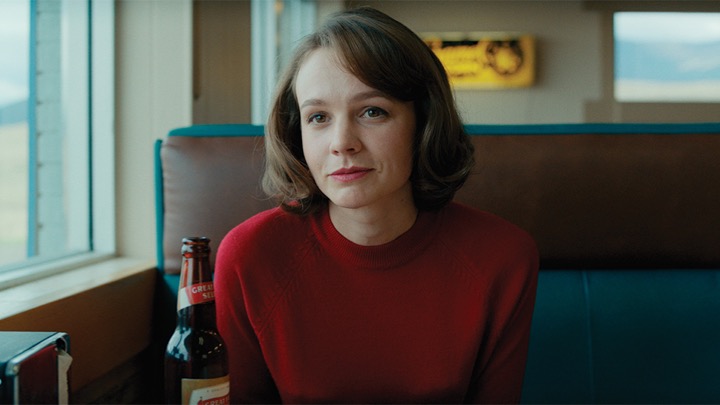“Wildlife” – “Do you know what they call trees in a forest fire? Fuel. Do you know what they call the trees when the fire goes by? The standing dead.” – Jeanette Brinson (Carey Mulligan)
Jeanette (Mulligan) and Jerry Brinson (Jake Gyllenhaal) and their teenage son Joe (Ed Oxenbould) look like an all-American family during a Montana autumn in 1960.
Jerry and Ed toss the football around in front of their modest home, while Jeanette has dinner waiting for them. Both parents show affection to each other, encourage Joe with his schoolwork and seem very content with their collective purpose in the world.
In short, life is good.
Soon, however, cracks of realism fall in front of director/co-writer Paul Dano’s camera. Jerry runs into trouble at work – due to his own transgressions – and since he is the only breadwinner, financial snags loom, and Jeanette knows it. They have apparently lived through this before, and another domestic crash feels imminent.
Dano and co-writer Zoe Kazan bring Richard Ford’s novel to life on the big screen and chronicle the Brinsons’ fate after Jerry’s unfortunate choice. Dano and Kazan chose to work together again! They starred as a flawed couple in 2012’s “Ruby Sparks”, and Kazan also penned that script. Their characters’ on-screen relationship (in that film) fell into turmoil due to a fanciful, mystical premise. There is no whimsy in “Wildlife”, however, as this family faces a grim, cold reality because of a simple case of misplaced pride.
Dano, Kazan, Mulligan, Gyllenhaal, and Oxenbould should beam with pride over their film, because “Wildlife” is a masterful – but affecting and somber – look at family and its fragility.
In a January 2018 interview at Sundance, Dano said, “(Family) is one of the greatest sources of love we’ll ever have in our lives, and it’s also one of the greatest sources of struggle we can have in our lives.”
Dano captures both. Love through soft, subtle moments. For instance, Jerry and Jeanette embrace during a quiet evening at home with Joe looking on with warm approval. Other ways are demonstrated through Jeanette’s mechanics to provide a comforting home. She prepares meals, cleans floors, and looks beautiful by wearing long, conservative dresses and sporting flawless make-up and hair. Jeanette makes a concerted effort.
Jerry, however, makes less of an effort and willfully walks into damaging spaces. The story implies that Jerry’s behavioral shifts are recognizable patterns from his past, and he certainly provokes frustration with the audience. A visit to a therapist would be a great start, but with his history and the 1960 Montana setting, that sort of aid might as well exist on the dark side of the Moon.
It’s just not in his orbit.
Jeanette undergoes the most change, as her worldview dramatically shifts, and Mulligan perfectly and tragically captures both sides of Dano’s comment about family. Jeanette accepts the responsibilities as a wife and mother and reaps the affections, but she suffers over Jerry’s irresponsibility – past and present – and this time, her reassurances to Joe and herself are not enough. Mulligan is a whirlwind here and delivers the film’s most complicated performance with the commanding ease of a lion tamer placing a 6-week-old kitten in front of a bowl of milk. Jeanette decides to govern her own fate, despite the limited options for women, as she drives the film’s pace and tone.
“Wildlife” is a history lesson. A future warning. A current reflection of ourselves or our possible-selves. With surroundings of brown grasslands and cool temperatures, the outlooks seem bleak. Dano guides this uncertain – and potentially explosive – dynamic with steady, gentle sensitivity. Sometimes with bold strokes, but mostly through careful, thoughtful nuance. Some of his grace spills into Joe too, and hence, this teen may offer some hope that living as the standing dead is not a permanent condition.
⭐⭐⭐ 1/2 out of ⭐⭐⭐⭐
Image and Trailer credits: IFC Films




